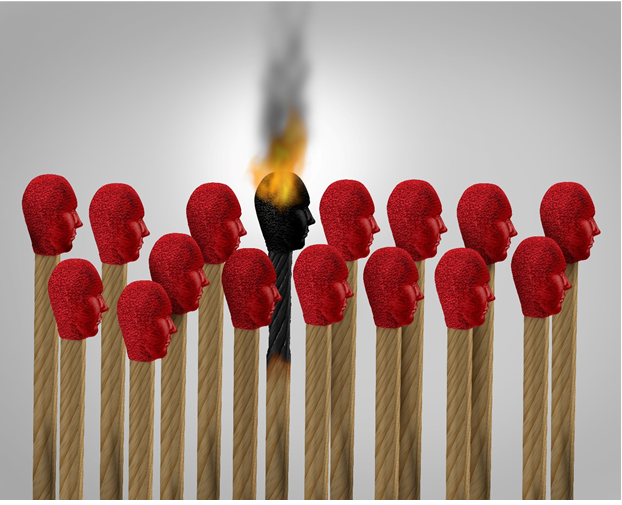
Burnout Part 1
Teachers and physicians have some of the highest rates of burnout in the country. Some studies suggest that these rates climb as high as 50%!
Burnout, which could be described as a worker who is caught up in that growth and then ultimately overwhelmed by it, was finally identified and named in this era. By the time George Bush (senior) was elected in 1988 those high-flying economic times were coming to an end, and we were headed into a scary conflict in the Middle East, AKA, the first war in IRAQ.
When you consider the adverse circumstances going on in the late 80’s, and the somewhat similar circumstances going on now, (with a pandemic thrown into the mix) it’s no surprise that Burnout is back in the headlines again today.
Change has always been a major source of stress, and there’s never been as much change, happening as quickly, as what occurred at the beginning of the pandemic. Practically overnight, people transitioned from working in office settings to working from home and those who remained in their workplaces (essential workers) did so at great risk. The employees who worked remotely often had to take on the new roles of teacher, babysitter, and even the role that my wife played of “covid compliance officer” for our entire household.
Stuck at home for months and now years, rates of depression, anxiety and stress soared. We stopped going to the gym, we stopped going to the movies, and we stopped traveling altogether. We started eating more, we started working more. (Remote workers logged in an average of 3 additional hours per day!) Boundaries between work-life and homelife no longer existed and we had to coexist with a deadly plague that no one, not even the medical community understood how to treat. (Remember how the CDC initially said masks were unnecessary???)
So is it any wonder, that burnout has leaped back into the public consciousness?
The term burnout was first popularized by Dr. Christina Maslach whose book “Burnout” was published in 1982. I was attending a conference on Stress in the Workplace back in the late 80’s and Dr. Maslach was one of the keynote speakers. The day after her presentation, I bumped into her in a hallway, and I asked her about this phenomenon which she had identified and studied. There were so many aspects to burnout that seemed surprising to me: A person suffering from Burnout could be someone who was a rising star in an organization, who at one time, cared deeply about his or her work, but now, due to certain circumstances (described in the next installment), no longer cared at all.
When I asked her how she came up with the perfect word to describe this phenomenon of being overworked to the point where you could hardly function, she said: “It wasn’t me. I had been interviewing a hospital nurse who kept saying I’ve got such a heavy workload that I’m so burned out. She just kept using that same word. She was the one who really coined the term.” Looking back, it seems to me, that it’s no surprise that it was what we would call today a frontline worker/caregiver who inspired a book by the same name that was the very first book on this topic.
In next week’s installment will look at the causes of burnout.





James Porter
Author